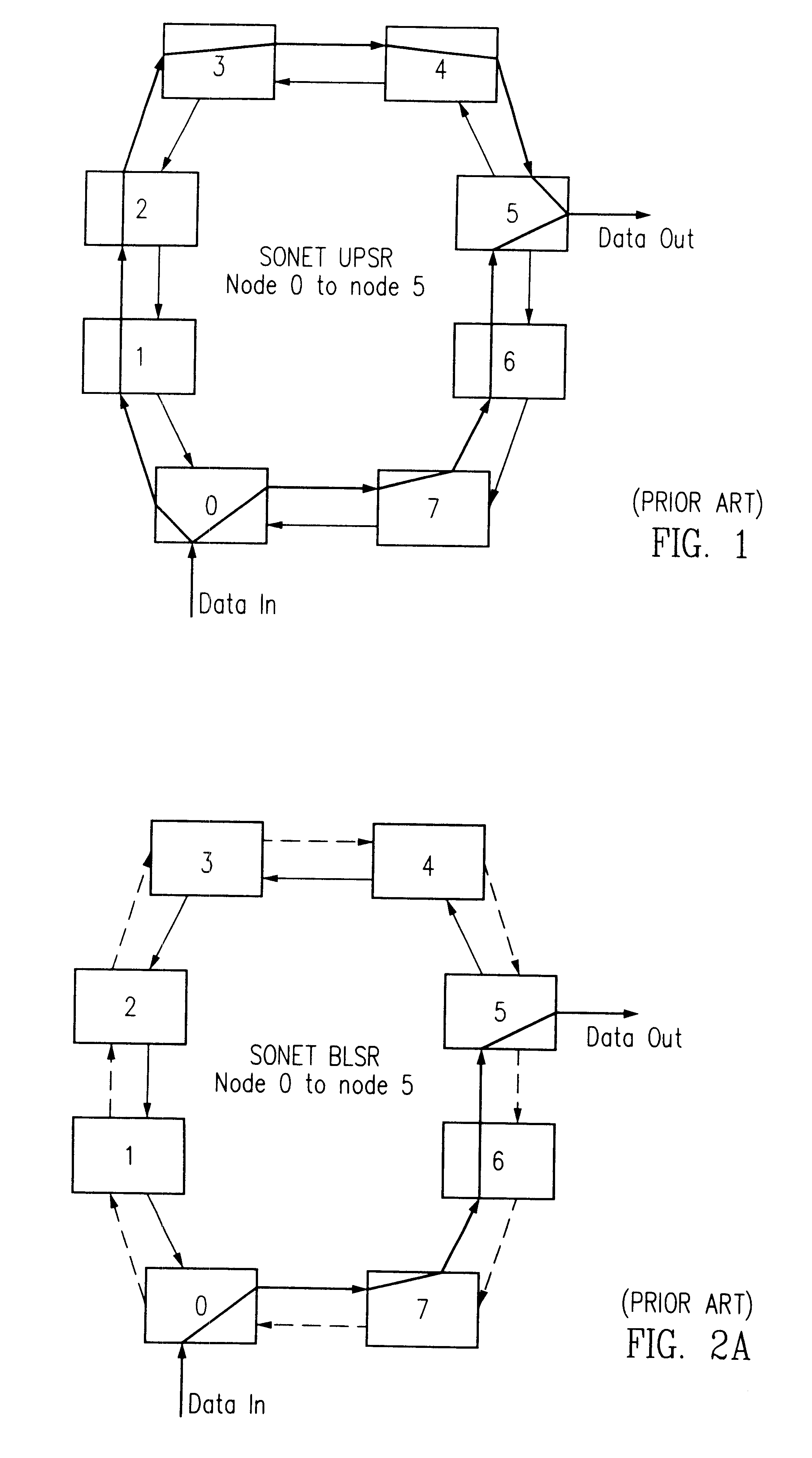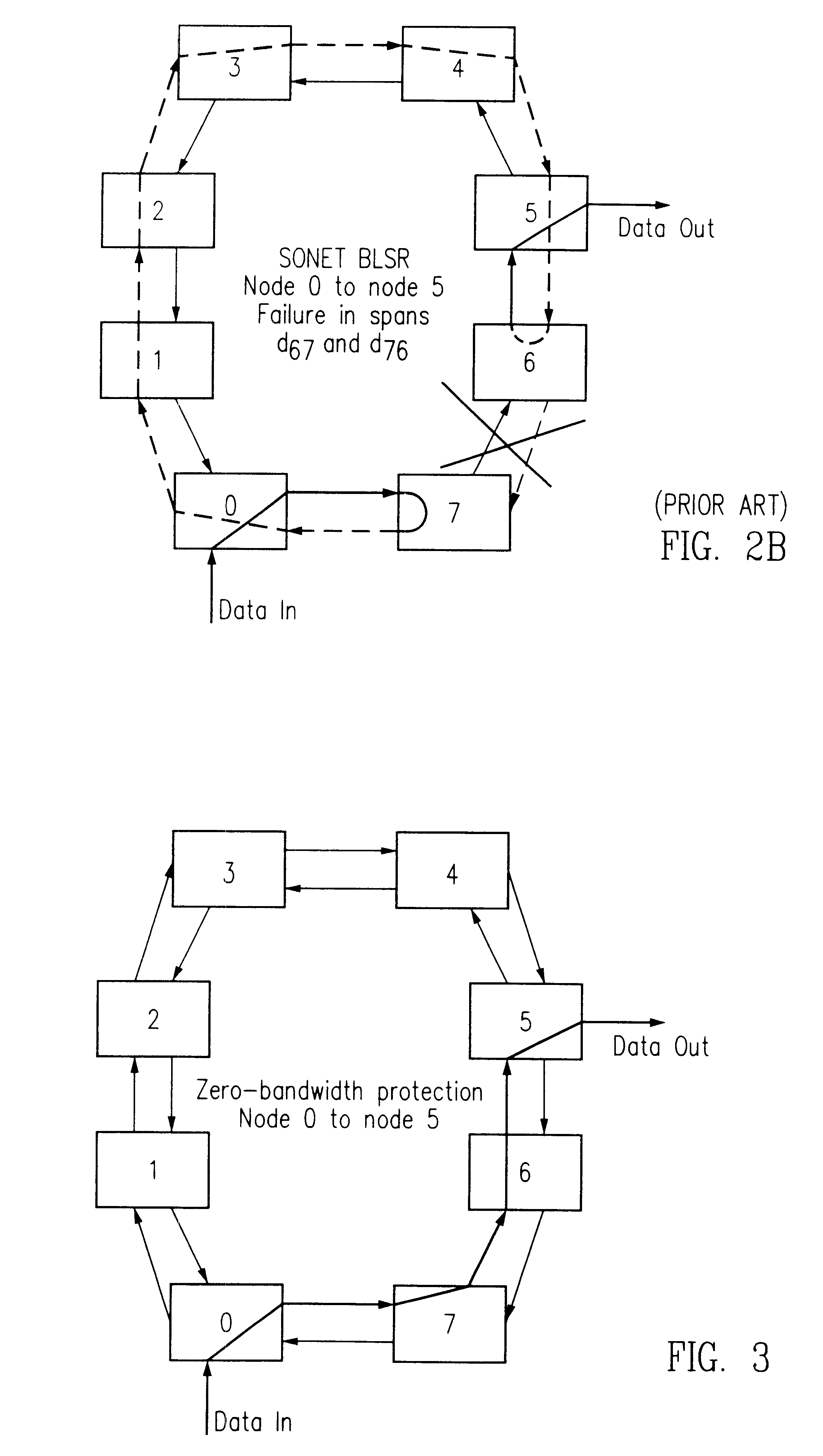Dynamically allocated ring protection and restoration technique
a dynamic allocation and ring technology, applied in the field of communication networks, can solve the problems of high price to be paid for ring protection, span outage, service disruption becoming increasingly costly, etc., and achieve the effect of maximizing switching speed
- Summary
- Abstract
- Description
- Claims
- Application Information
AI Technical Summary
Benefits of technology
Problems solved by technology
Method used
Image
Examples
Embodiment Construction
>FIG. 5 illustrates the optional interim state of the network (based on wrapping traffic from one ring to the other) between that shown in FIG. 3 and that shown in FIG. 4.
[0023]FIG. 6 illustrates pertinent hardware used in a single node.
[0024]FIG. 7 provides additional detail of the switching card and ring interface card in FIG. 6.
[0025]FIG. 8 is a flowchart illustrating steps used to identify a change in the status of the network and to re-route traffic through the network.
DETAILED DESCRIPTION OF THE EMBODIMENTS
[0026]The purpose of the invention described herein is to achieve fast protection in a ring network while providing for efficient network capacity utilization. Certain aspects of the preferred embodiment are:[0027]a. Transmission of a given packet between two nodes in only one direction around the ring (rather than in both directions as is done in SONET UPSR).[0028]b. Differentiation between “protected” and “unprotected” traffic classes.[0029]c. A fast topology communication...
PUM
 Login to View More
Login to View More Abstract
Description
Claims
Application Information
 Login to View More
Login to View More - R&D
- Intellectual Property
- Life Sciences
- Materials
- Tech Scout
- Unparalleled Data Quality
- Higher Quality Content
- 60% Fewer Hallucinations
Browse by: Latest US Patents, China's latest patents, Technical Efficacy Thesaurus, Application Domain, Technology Topic, Popular Technical Reports.
© 2025 PatSnap. All rights reserved.Legal|Privacy policy|Modern Slavery Act Transparency Statement|Sitemap|About US| Contact US: help@patsnap.com



